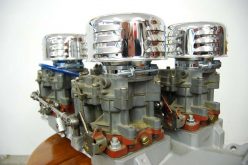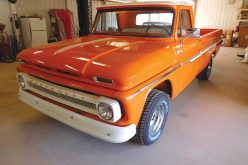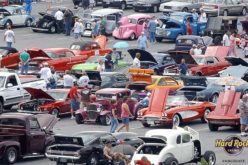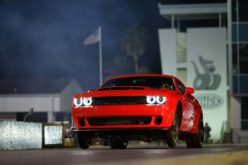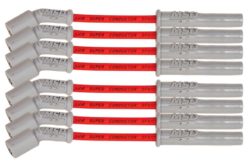Classic Muscle: 1970 Dodge Charger R/T


Gordon Mathies is a true car enthusiast. Being involved in the car hobby gives him the opportunity to tinker and express his creativity away from his day job helping to run the family’s burgeoning nursery operations in Chilliwack, British Columbia.
Mr. Mathies has always loved muscle cars, as he was a kid during their heyday. The 1970 Dodge Charger R/T is one of the most popular muscle cars from the period and stood apart from the rest with its squared off and seemingly chiseled body lines, coke bottle shape, and aggressive stance.
“I bought this car because when I was a teenager, this car was the epitome of cool,” said Mathies. “This was the car to own!”
This example was originally from Manitoba and a rusty basket case when Gordon found it a decade ago. The lower quarter panels were all rotted out so had to be replaced, as did the trunk pan, but luckily the floor was in good shape. The fenders were also banged up and showed some mild surface rust, but they straightened out okay.
“The car is basically just like how it came out of the factory,” explained Mathies. “I have changed a few things, but the block, transmission, and rear end are all date coded correct. It’s not numbers matching, but that is a tough thing to find when it comes to the MOPAR cars from this era, as guys blew stuff up racing them.”

“I built this car as a driver to original specifications, so this is a stock engine rated supposedly at 375 horsepower,” Mathies says, “but they never made that much power. It is probably closer to 300 horsepower. To get the bigger number, you would have to put a much bigger cam in it, like that fitted to the six-pack cars.”
Factory literature claims that the engine produced 480 pound-feet of torque, which provides sufficient performance to appeal to the hooligan seated behind the wheel without breaking the bank at the pump, or requiring an excessive maintenance schedule. “The Magnum 440 has always been a reliable engine, and the TorqueFlite transmission with 3.55 rear gears works very efficiently.”

“The interior is all original except the seat covers, and no reproduction pieces were used. The bumpers are also original. I added custom billet Magnum 500 wheels to give the car a look that I prefer, but I have the original steel wheels and hubcaps for this car. If I was planning to show it I would swap them out.”
Luckily, the car came relatively complete, as parts for the 1970 models are among the most difficult to find. In fact, Mathies has never been able to find original seat cushions for the car and no one makes them for the 1970 model, as it featured a seat design that was only used for a single year.
“This car had the factory air-conditioning option, but I haven’t installed it as I don’t have all the pieces, and they tend to be very difficult to find. With a little time, energy, and extra money I would be able to solve this problem.”

The mid-size two-door coupe is one of the most distinctive of the designs offered by Chrysler during the period when the muscle cars ruled the streets. This example is a second-generation car, which includes models from 1968 through 1970.
The design incorporates a double-diamond coke bottle profile with curves around the front fenders and rear quarter panels. The rear-end sheet metal features a “kick up” spoiler appearance, said to be inspired by that of Group 7 racing vehicles of the period.

For 1970, the Charger was fitted with a new grille treatment which was no longer divided in the middle and was completely surrounded by a chromed loop bumper. Vacuum-operated flip-away headlights helped clean up the front end and gave the car a menacing grin.
Simulated rear-facing vents were affixed to the doors and proved the perfect location to embed the attractive R / T designation trim. They also helped enhance the car’s sporty look and hinted at the model’s NASCAR development. The Chargers were so successful on the track that in 1970, they won more races than any other model.




